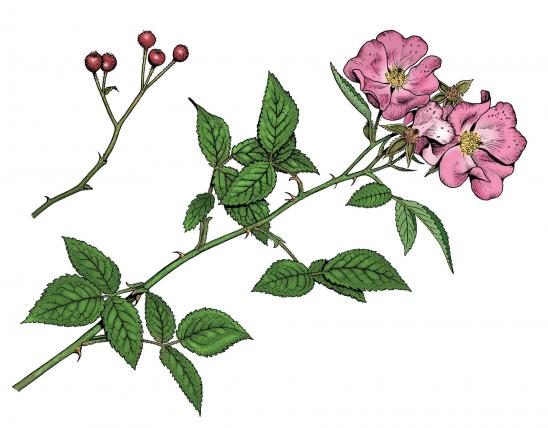
Wild geranium is an herbaceous perennial, much branched on stiff, hairy stems. Frequently found in colonies. Flowers about 1 inch across, few to several on long peduncles subtended by leaflike bracts; petals 5, deep magenta to pink or rose, often marked with darker shades. The 10 anthers wither before the stigma is receptive, ensuring cross-fertilization. Blooms April–June. Leaves with long petioles (leaf stems); basal leaves 5–7, cleft into wedge-shaped sections; stem leaves only 2 on a stem, smaller, on shorter petioles. Fruit a 5-parted capsule, narrow and sharply pointed, resembling a “crane’s bill.”
Height: to about 2 feet.

Statewide, except for the southeastern lowlands.
Habitat and Conservation
Occurs in open low and upland woods, borders of woods, shaded areas, and a variety of other sites. You may also see it cultivated in gardens, where it grows in part shade and rich soils. Native wildflower nurseries often sell this flower, which is one of our showiest natives. Please don’t remove plants from the wild.
Human Connections
Wild geranium held an important place in Native American medicine. In particular, many tribes made use of its astringent properties, using it to treat everything from mouth sores to hemorrhoids. Today we mainly appreciate this plant for its beautiful flowers.
Ecosystem Connections
Several insects visit the flowers for nectar and pollen, and some small rodents eat the seeds. Herbivores, including deer, eat the foliage.































